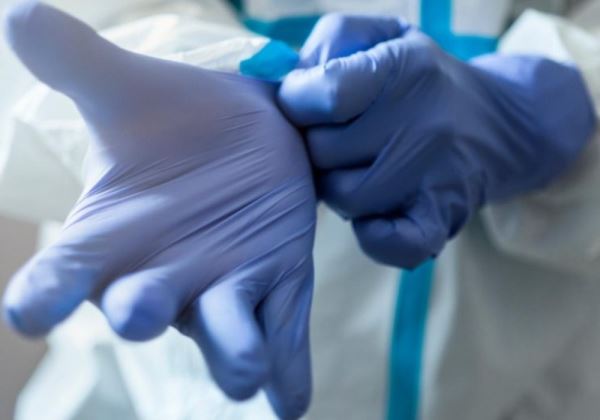Our Blog
A study by La Paz and Primary Care reveals alterations in the tongue as a symptom of COVID19
Another symptom that can alert of COVID-19 infection are changes in the palms of the hands and soles of the feet, specifically, a burning sensation and redness followed, on some occasions, by flaking or the appearance of some very characteristic small spots.
The investigation, led by the Dermatology Service of the Hospital Universitario La Paz and with the participation of eight Primary Care doctors who treated patients at the Hospital de la Comunidad de Madrid at IFEMA during the first wave of the pandemic, was carried out during the month of April, and concludes that 25% of patients with COVID-19 presented alterations in the tongue and mouth, and up to 40% in palms and soles.
The investigation Prevalence of mucocutaneous manifestations, oral and palmoplantar findings in 666 patients with pneumonia due to COVID-19 has been published in the prestigious scientific journal British Journal of Dermatology , a world reference in dermatological processes, and represents an advance in the early detection of coronaviruses , since it adds to the symptoms already described as scientific evidence that related to alterations in the tongue and palms and soles.
The authors conclude the investigation by indicating that the oral cavity "can be altered by the COVID-19 disease, lingual edema with transient U-shaped lingual papillitis or glossitis with depapilation in patches are very characteristic signs, as is the sensation of burning in the oral cavity. This burning can also appear on the palms and soles with a reddish color or scaling and spots. All of them can be key signs for an early diagnosis of this disease”.
The study was led by dermatologist Almudena Nuño González, from the Dermatology Service of the La Paz University Hospital, together with the head of the Dermatology Service of this hospital, Pedro Herranz Pinto, and other dermatologists from this Service: Kyrylo Magaletsky, Ander Mayor and Marta Feito and with the participation of the family doctor Pilar Martín-Carrillo Domínguez, from the Local Clinic of Colmenarejo; family doctor Ángela Gallego Arenas, from the Presentation Sabio Health Center (Móstoles); and Elena Pérez Castro, who at the time of the investigation was participating as a resident doctor, and is currently an assistant in the Emergency Department of the Hospital del Escorial.
Cross-sectional study at the IFEMA Hospital
The cross-sectional study on language disorders carried out by SERMAS professionals was carried out last April at IFEMA, examining the skin and oral mucosa of 666 patients with COVID-19.
In total, 78 patients (25.65%) presented alterations in the oral mucosa. The most frequent was U-shaped transient anterior lingual papillitis (11.5%), associated or lingual edema (6.6%); aphthous stomatitis (6.9%), mucositis (3.9%) glossitis with depapilation in patches (3.9%); burning mouth (5.3%); coated tongue (1.6%); and enanthema (0.5%). Most reported associated dysgeusia and palmoplantar alterations were seen in 39.8% of the cases, and included a burning sensation (7%), desquamation (25%) and the appearance of characteristic little spots (15%).
The coronavirus has been linked to multiple symptoms: respiratory, thrombotic, neurological, digestive or skin. The latter have been classified into five types: acroischemic lesions, vesicular lesions, urticarial rash, maculopapular rash, or livedoid lesions. However, until the publication of this scientific finding, oral alterations and palmoplantar lesions associated with COVID-19 had not been considered.
Primary care and SERMAS hospitals
The Head of Internal Medicine at the Infanta Sofía University Hospital, Gonzalo García Casasola, also participated in this research of great scientific interest; the Laboratory Service of Hospital La Paz, with Paloma Oliyer; the Pathological Anatomy Service, with María José Beato and Elena Ruiz Bravo; and the Microbiology Service, with Dolores Montero and resident doctors Cristina Herranz Mañas and Jorge Artigas Almazán.
In addition, they had the contributions of family doctors from the Primary Care Care Management: Consuelo Mayoral López, from the Felipe II Health Center (Móstoles), Esther Valdés Cruz, from the Yébenes Health Center (Madrid district of Latina); María José Ortuño, family doctor, from the Pozuelo Estación Health Center (Pozuelo de Alarcón) and, at the time of the investigation, two primary care resident doctors: Esther Hernández Castilla, currently a family doctor at the Cerro del Aire Health Center (Majadahonda) and Natalia Sotelo Kest, from CS.Galapagar.

